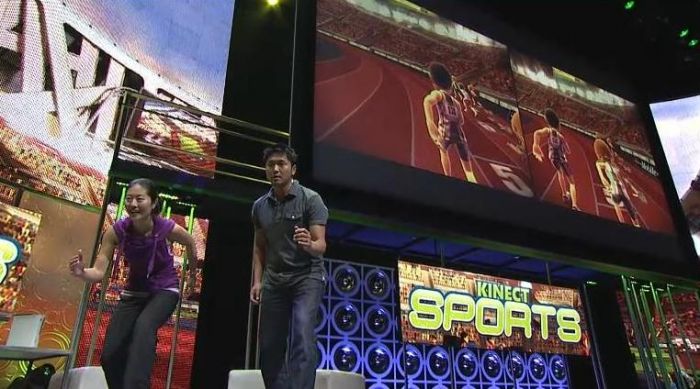A Look at the Kinect
It's now nearly a year since Microsoft released the Kinect, a movement and voice-sensing peripheral designed with one key message: "You are the controller". With the Wii's popularity finally showing signs of fatigue, Microsoft and Sony leapt on the casual bandwagon and launched their own movement-based control schemes, with Kinect going head to head with the PlayStation Move. Although Sony has been far less vocal around their wand-like accessory of late, Microsoft have pushed Kinect into centre stage to the point where the Xbox 360's more hard-core fan base is showing signs of discomfort. So what does the past 10 months tell us about the Kinect strategy moving forwards?

In the months leading up to Kinect's launch the gaming press were shown a constant stream of Kinect demonstrations, many of which were aimed squarely at the Wii's target audience. Party and family-orientated games were the order of the day, with Rare Studios unveiling Kinect Sports (which I reviewed XXXHEREXXX), Good Science Studio demonstrating Kinect Adventures and Harmonix showing off Dance Central. All of these games released to generally positive reviews and were shipped alongside the Kinect at launch. Combined with Microsoft's enormous marketing budget (more than they had to launch the original Xbox) these titles drove Kinect sales through the roof, leading to Microsoft claiming their sensor as the 'fastest selling consumer device in the world'.
And so Kinect has now shipped over 10 million units, as both a standalone product and also as part of console bundles. But once the initial novelty had worn off people started to look for new reasons to play their Kinect, and plenty of those people came up short. One of the primary selling points has been the ability for Kinect to be used as a fitness aid, spawning titles such as EA Sports Active and Ubisoft's Your Shape: Fitness Evolved. With the ability to develop workout routines and track calorie progress without (in Your Shape's case) any extra accessories the Kinect has gained popularity as a weight-reduction and fitness tool, aided somewhat by a slightly annoying TV advert.
But for those who use their console for entertainment, what else has there been to play? Child of Eden was only released last month, and despite a very positive critical reception the game itself can be completed in just a few hours, hardly lending itself to the idea of a long-term reason to play using the Kinect. The latest Harry Potter title did incorporate Kinect features but only as far as a few challenge levels outside of the main story, and even then the movements required were often frustrating and forced. Playing these more serious titles just highlight the very basic flaw of Kinect, without a button-based controller in your hands you are forced into weird and strange flicks and waves to do any complex manoeuvres, leaving any attempt by the developers to introduce variation a frustrating experience.
So what's the future for Kinect? Well don't expect to see the river of casual games run dry anytime soon, with the recent announcement of Kinect Sports Season 2 and the impending release of Dance Central 2 it's a fair bet to say that Microsoft is counting on further party titles to help further the cause. I suppose it's a forgivable business strategy, after all the primary user base targeted by the peripheral does seem to consist of families and young children, despite what the Microsoft TV adverts would have us believe.
However E3 and more recently Gamescom have given 'hardcore' gamers some level of hope. It seems that a new approach is to try and encourage developers to integrate Kinect into upcoming blockbuster titles. While in some cases Kinect support has been promised without any details on the features actually being released (for example the Halo: Anniversary Edition scheduled for November release) in other cases the developers have been keen to show how Kinect implementation can add to the immersion and experience within the game. Mass Effect 3's developers Bioware have demonstrated how the sensor can be used to order teammates to certain areas of cover, or how their powers can be activated just by speaking the command. Rather than utilising the paused command wheel traditionally found within Mass Effect games this incorporation of Kinect might appeal to gamers who prefer combat to flow without interruption.
It remains to be seen whether or not hardcore gamers are ever going to warm to Kinect. Some will dismiss it as a party tool, others recoil in horror at the thought of Kinect implementation appearing in their favourite franchises. But some gamers are willing to try anything to justify the £129.99 RRP gadget, and I can definitely see some that some developers do envision their gaming experiences being improved (or at least added-to) through the Kinect sensor. It will be interesting to see how far games like Ghost Recon: Future Soldier and Mass Effect 2 are willing to integrate the Kinect's functionality, and whether or not gamers just switch it off anyway.







COMMENTS